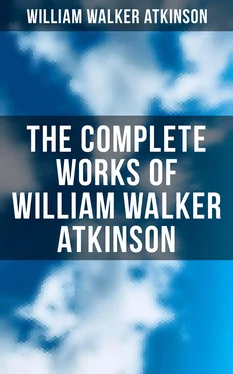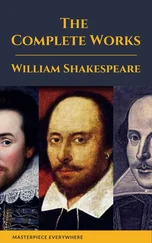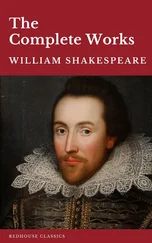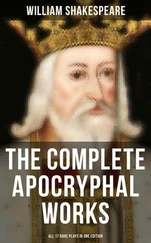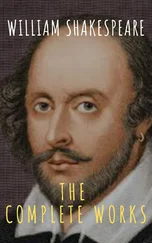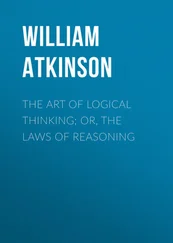II. Allegory , or “A discourse designed to convey a different meaning from that which it directly expresses; a figure of speech in which the speaker or writer gives forth not only the actual narrative, description, or whatever he wishes to present, but one so much resembling it as on reflection to suggest it, and bring home to the mind with greater force and effect than if it had been told directly.” An allegory is really an extended metaphor . An allegory may be short, brief and pointed, in which case it is known as a “fable” or “parable.” The fables of Æsop, and the Parables of the Bible, are forms of allegory. Bunyan’s “Pilgrim’s Progress” is probably the best example of extended allegory. Spencer’s “Faerie Queen” is a moral allegory. Macaulay says: “Bunyan is indeed as decidedly the first of allegorists, as Demosthenes is the first of orators, or Shakespeare the first of dramatists.” The following is an example of a brief allegory:
“Thou hast brought a vine out of Egypt. Thou hast cast out the heathen, and planted it. Thou preparedst room before it, and didst cause it to take deep root, and it filled the land. The hills were covered with the shadow of it, and the boughs thereof were like the goodly cedars.”
III. Simile , or “the likening of two things, which though differing in many respects, have some strong point or points of resemblance.” We have explained the distinction between the metaphor and the simile . In the metaphor the resemblance between the original object and the adopted image is boldly assumed ; while in the simile the resemblance is formally stated by the words “as” or “like.” The Songs of Solomon are filled with beautiful similes. The following from Ossian is an example of the use of the simile:
“Pleasant are the words of the song, said Cuchullin, and lovely are the tales of other times. They are like the calm dew of the morning on the hill of roes, when the sun is faint on its side, and the lake is settled and blue in the vale.”
IV. Synecdoche , or “a figure of speech by which the whole of a thing is taken for the part, or a part for the whole, as the genus for the species, or the species for the genus.” As for example: “All hands on deck;” “The sea is covered with sails ;” “Our hero was gray, but not from age;” “Ten thousand. were on his right hand .”
V. Metonymy , or “a figure of speech by which one word is put or used for another; as when the effect is substituted for the cause; the inventor for the thing invented; the material for the thing made; etc.” For example we say, “He keeps a good table ;” or “We read Virgil ;” or “The poorest man in his cottage may bid defiance to all the force of the Crown ;” or “He petitioned the Bench , being a member of the Bar .” There is a very, close resemblance between metonymy and synecdoche .
In addition to the above-mentioned Rhetorical Figures of Imagery, there are several Rhetorical Figures of Arrangement, in which words, phrases, clauses, sentences, figures, etc., are arranged in a peculiar or striking way. The principal Figures of Arrangement are as follows:
I. Climax , or “a figure in which the sense rises gradually step by step in a series of images, each exceeding its predecessor in force and dignity,” or “the arrangement of a succession of words, clauses, or sentences, in such a way that the weakest may stand first, and that each in turn, to the end, may rise in importance, and make a deeper impression on the mind than that which preceded it. As for example: “It is an outrage to bind a Roman citizen; it is a crime to scourge him; it is almost parricide to kill him; but to crucify him—what shall I say of this?” or, “Who shall separate us from the love of Christ? Shall tribulation, or distress, or persecution, or famine, or nakedness, or peril, or sword?”
II. Antithesis , or “sharp opposition between word and word, clause and clause, sentence and sentence, or sentiment and sentiment, specially designed to impress the reader or hearer.” As for example: “He had covertly shot at Cromwell , he now openly aimed at the Queen ;” “To err is human, to forgive divine;” “Though grave , yet trifling ; zealous , yet untrue .” Its importance as an . effective instrument of expression is admitted by all the authorities. As the author of Lacon says: “To extirpate antithesis from literature altogether, would be to destroy at one stroke about eight-tenths of all the wit, ancient and modern, now existing in the world.”
III. Irony , or “a mode of speech in which the meaning is contrary to the words. The intention is mildly to ridicule undue pretensions or absurd statements while nominally accepting them unquestionably.” In irony , the real meaning is subtly suggested by the tone of the voice or the implication of the words. As for example when Elijah said to the priests of Baal, who were endeavoring to persuade their god to manifest himself in a miraculous manner: “Cry aloud, for he is a god . Either he is talking, or he is pursuing, or he is on a journey, or peradventure he sleepeth, and must be awakened I”
IV. Epigram , or “a sentence of brief and pointed character.” As for example Talleyrand’s famous saying: “Language was given to man to conceal his thoughts.” The epigram is often used with great effect, even when it implies a fallacy. Many people accept a snappy, pointed statement, cleverly phrased, as a self-evident truth—they delude themselves into believing that the epigram is an axiom . For this reason, and because it adds brilliancy and sparkle to a discourse, many speakers employ the epigram very freely.
V. Hyperbole , or “the figure of speech which depends upon exaggeration for its effect.” Blair says: “It consists in magnifying an object beyond its natural bounds. In all languages, even in common conversation, hyperbolical expressions very frequently occur; as ‘swift as the wind;’ ‘as white as the snow;’ and the like; and our common forms of compliment are almost all of them extravagant hyperboles.” Hyperbole is an inheritance from the Oriental writers, who indulge in it freely. It is a characteristic of the young writer or speaker, and often arises from a lively imagination which generally finds pleasure in magnifying things. Hyperbole also often results from an ardent temperament or aroused emotion, although it may also be caused by a keen sense of humor, in which case it takes on the attributes of irony . In addition to the examples given above, the following will serve to illustrate this figure of speech: “Saul and Jonathan were swifter than eagles , and stronger than lions .” “And trembling Tiber dived beneath his bed .” “ Swifter than the winds and the wings of the lightning .”
VI. Vision , or “the representation of past events, or imaginary objects and scenes, as actually present to the senses.” As for example: “Cæsar leaves Gaul crosses the Rubicon, and enters Italy;” or “They rally , they bleed , for their kingdom and crown.” The effect of the figure is produced by the substitution of the present tense for the past.
VII. Apostrophe , or “the turning from the regular course of the subject, into an invocation or address.” As for example: “Death is swallowed up in victory. O, death, where is thy sting? O, grave, where is thy victory?” It has the effect of turning aside from the auditor or audience and addressing some abstract principle, inanimate object, or person not present.
Читать дальше
